DeWalt DW411K Handleiding
DeWalt
Schuurmachine
DW411K
Bekijk gratis de handleiding van DeWalt DW411K (6 pagina’s), behorend tot de categorie Schuurmachine. Deze gids werd als nuttig beoordeeld door 57 mensen en kreeg gemiddeld 4.4 sterren uit 29 reviews. Heb je een vraag over DeWalt DW411K of wil je andere gebruikers van dit product iets vragen? Stel een vraag
Pagina 1/6

INSTRUCTION MANUAL
GUIDE D'UTILISATION
MANUAL DE INSTRUCCIONES
DW411/DW412
1/4 Sheet Sanders
Ponceuses à 1/4 feuille
Lijadoras de 1/4 de hoja
INSTRUCTIVO DE OPERACIÓN, CENTROS DE SERVICIO Y PÓLIZA
DE GARANTÍA. LÉASE ESTE INSTRUCTIVO ANTESADVERTENCIA:
DE USAR EL PRODUCTO.
DEWALT Industrial Tool Co., 701 East Joppa Road, Baltimore, MD 21286
(JAN06) Form No. 158635-03 DW411, DW412 Copyright © 1998, 2001, 2004, 2005 DEWALT
The following are trademarks for one or more D WALT power tools: the yellow and black color scheme; theE
“D” shaped air intake grill; the array of pyramids on the handgrip; the kit box configuration; and the array of
lozenge-shaped humps on the surface of the tool.
IF YOU HAVE ANY QUESTIONS OR COMMENTS ABOUT THIS OR ANY DEWALT TOOL,
CALL US FREE AT 1-800-4-DEWALT (1-800-433-9258).
General Safety Instructions
WARNING! Read and understand all instructions. Failure to follow all instruc-
tions listed below, may result in electric shock, fire and/or serious personal injury.
SAVE THESE INSTRUCTIONS
WORK AREA
• Keep your work area clean and well lit. Cluttered benches and dark areas invite accidents.
• Do not operate power tools in explosive atmospheres, such as in the presence of flam-
mable liquids, gases, or dust. Power tools create sparks which may ignite the dust or
fumes.
• Keep bystanders, children, and visitors away while operating a power tool. Distractions
can cause you to lose control.
ELECTRICAL SAFETY
• Grounded tools must be plugged into an outlet properly installed and grounded in
accordance with all codes and ordinances. Never remove the grounding prong or
modify the plug in any way. Do not use any adaptor plugs. Check with a qualified elec-
trician if you are in doubt as to whether the outlet is properly grounded. If the tools
should electrically malfunction or break down, grounding provides a low resistance path to
carry electricity away from the user. Applicable only to Class I (grounded) tools.
• Double insulated tools are equipped with a polarized plug (one blade is wider than the
other.) This plug will fit in a polarized outlet only one way. If the plug does not fit fully
in the outlet, reverse the plug. If it still does not fit, contact a qualified electrician to
install a polarized outlet. Do not change the plug in any way. Double insulation elim-
inates the need for the three wire grounded power cord and grounded power supply system.
Applicable only to Class II (double insulated) tools.
• Avoid body contact with grounded surfaces such as pipes, radiators, ranges and
refrigerators. There is an increased risk of electric shock if your body is grounded.
• Don’t expose power tools to rain or wet conditions. Water entering a power tool will
increase the risk of electric shock.
• Do not abuse the cord. Never use the cord to carry the tools or pull the plug from an
outlet. Keep cord away from heat, oil, sharp edges or moving parts. Replace damaged
cords immediately. Damaged cords increase the risk of electric shock.
• When operating a power tool outside, use an outdoor extension cord marked “W-A”
or “W.” These cords are rated for outdoor use and reduce the risk of electric shock.
Minimum Gage for Cord Sets
Volts Total Length of Cord in Feet
120V 0-25 26-50 51-100 101-150
240V 0-50 51-100 101-200 201-300
Ampere Rating
More Not more AWG
ThanThan
0 - 6 18 16 16 14
6 - 10 18 16 14 12
PERSONAL SAFETY
• Stay alert, watch what you are doing and use common sense when operating a power
tool. Do not use tool while tired or under the influence of drugs, alcohol, or medication.
A moment of inattention while operating power tools may result in serious personal injury,
• Dress properly. Do not wear loose clothing or jewelry. Contain long hair. Keep your
hair, clothing , and gloves away from moving parts. Loose clothes, jewelry, or long hair
can be caught in moving parts. Air vents often cover moving parts and should also be avoided.
• Avoid accidental starting. Be sure switch is off before plugging in. Carrying tools with
your finger on the switch or plugging in tools that have the switch on invites accidents.
• Remove adjusting keys or wrenches before turning the tool on. A wrench or a key that
is left attached to a rotating part of the tool may result in personal injury.
• Do not overreach. Keep proper footing and balance at all times. Proper footing and bal-
ance enables better control of the tool in unexpected situations.
• Use safety equipment. Always wear eye protection. Dust mask, non-skid safety shoes,
hard hat, or hearing protection must be used for appropriate conditions.
TOOL USE AND CARE
• Use clamps or other practical way to secure and support the workpiece to a stable
platform. Holding the work by hand or against your body is unstable and may lead to loss of
control.
• Do not force tool. Use the correct tool for your application. The correct tool will do the
job better and safer at the rate for which it is designed.
• Do not use tool if switch does not turn it on or off. Any tool that cannot be controlled with
the switch is dangerous and must be repaired.
• Disconnect the plug from the power source before making any adjustments, changing
accessories, or storing the tool. Such preventative safety measures reduce the risk of
starting the tool accidentally.
• Store idle tools out of reach of children and other untrained persons. Tools are dan-
gerous in the hands of untrained users.
• Maintain tools with care. Keep cutting tools sharp and clean. Properly maintained tools,
with sharp cutting edges are less likely to bind and are easier to control.
• Check for misalignment or binding of moving parts, breakage of parts, and any other
condition that may affect the tools operation. If damaged, have the tool serviced
before using. Many accidents are caused by poorly maintained tools.
• Use only accessories that are recommended by the manufacturer for your model.
Accessories that may be suitable for one tool, may become hazardous when used on
another tool.
SERVICE
• Tool service must be performed only by qualified repair personnel. Service or mainte-
nance performed by unqualified personnel could result in a risk of injury.
• When servicing a tool, use only identical replacement parts. Follow instructions in the
Maintenance section of this manual. Use of unauthorized parts or failure to follow
Maintenance Instructions may create a risk of electric shock or injury.
Additional Safety Instructions for Sanders
• ALWAYS WEAR EYE PROTECTION.
• It is not advised to sandpaper painted surfaces that may contain lead. See page 2 for
Precautions to Take When Sanding Paint.
• Clean your tool out periodically.
•Empty dust bag frequently. Especially when sanding resin coated surfaces such as
polyurethane, varnish, shellac, etc. The accumulation of fine sanding dust particles may self
ignite and cause fire.
•Do not operate this tool for long periods of time. Vibration caused by the operating action
of this tool may cause permanent injury to fingers, hands, and arms. Use gloves to provide
extra cushion, take frequent rest periods, and limit daily time of use.
WARNING: Some dust created by power sanding, sawing, grinding, drilling, and other con-
struction activities contains chemicals known to cause cancer, birth defects or other reproduc-
tive harm. Some examples of these chemicals are:
• lead from lead-based paints,
• crystalline silica from bricks and cement and other masonry products, and
• arsenic and chromium from chemically-treated lumber (CCA).
Your risk from these exposures varies, depending on how often you do this type of work. To
reduce your exposure to these chemicals: work in a well ventilated area, and work with approved
safety equipment, such as those dust masks that are specially designed to filter out microscop-
ic particles.
•Avoid prolonged contact with dust from power sanding, sawing, grinding, drilling,
and other construction activities. Wear protective clothing and wash exposed areas
with soap and water. Allowing dust to get into your mouth, eyes, or lay on the skin may pro-
mote absorption of harmful chemicals.
WARNING: Use of this tool can generate and/or disburse dust, which may cause serious and
permanent respiratory or other injury. Always use NIOSH/OSHA approved respiratory protection
appropriate for the dust exposure. Direct particles away from face and body.
CAUTION: Wear appropriate hearing protection during use. Under some conditions
and duration of use, noise from this product may contribute to hearing loss.
• The label on your tool may include the following symbols.
V..........volts A ..........amperes
Hz........hertz W ..........watts
min ......minutes ........alternating current
....direct current no..........no load speed
........Class II Construction ..........earthing terminal
........safety alert symbol .../min....revolutions per minute
SAVE THESE INSTRUCTIONS
Motor
Your DEWALT tool is powered by a D WALT built motor. Be sure your power supply agrees withE
the nameplate marking (Volts, 120 AC only). A Voltage decrease of more than 10% will cause
loss of power and overheating. All tools DEWalt tools are factory tested; if this tool does not oper-
ate, check the power supply.
Attaching Abrasive Paper (Fig. 3)
Your sander is designed to use 1/4 sized sanding sheets. This size paper can be made by:
a. Cutting full sized (9" x 11") sandpaper into 1/4 sheets of 4-1/2" x 5-1/2".
b. Cutting 1/2 sheet sandpaper into two 4-1/2" x 5 1/2" sheets. Pre-cut 4-1/2" x 5-1/2" sandpa-
per is available at extra cost.
For normal operations, assemble the abrasive paper to your unit as follows.
1. Soften the stiff sandpaper by pulling it over the 90° edge of a table or other straight edge, as
shown in Figure 1. Concentrate on softening the edges to be clamped.
2. Release clamp by pulling up on clamp lever and disengaging it from the tab on the base plate.
Fig. 2 (A).
3. Insert the 4-1/2" edge of the abrasive paper under the front paper clamp, as shown in Figure
3 until it hits the paper limiting ribs shown in the figure. Close the front paper clamp and hook
it into the lock position behind the tab on the base plate.
4. Stretch paper over sanding pad and insert under the opposite clamp in the same way.
5. If you are using the dust extraction feature, perforate the sand- paper with the provided paper
punch as shown in Figure 5.
Switch (Fig. 4)
To turn the unit on, depress the side of the dust protected switch that corresponds to the sym-
bol “I”. To turn the tool off, depress the side of the switch that corresponds to the symbol “O”.
See Figure 4.
Paper Punch (Fig. 5)
A paper punch is provided with your sander to let you perforate regular sandpaper to make dust
collection possible.
To perforate your sandpaper, install the sandpaper on the tool as instructed in this manual. With
the sander turned off and unplugged, place the paper punch on the paper so that the tabs at the
edges of the punch are against any two adjacent sides of the sanding pad, as shown. Press the
punch against the pad so that the 8 points penetrate the paper, as shown in Figure 6. (Press the
punch into the pad as far as it will go.) Remove the paper punch and the paper is ready. An alter-
nate method of perforating the paper is to fasten the punch down to a suitable work surface and
press the sander (with the paper attached) down on the punch. Two holes are provided in the
punch for this purpose. Use #8 flat head screws.
Dust Collection Bag (Fig. 8)
DUST COLLECTION BAG: NEVER OPERATE THIS TOOL WITH PERFORATED PAPER
UNLESS THE DUST COLLECTION BAG IS IN PLACE.
To use the dust collecting system, lower the plastic end of the collection bag over the flange and
push it down as far as it will go, as shown.
To empty the dust collection bag, simply lift it up, off of the sander and empty over a trash
receptacle.
If you have questions or comments, contact us.
Pour toute question ou tout commentaire, nous contacter.
Si tiene dudas o comentarios, contáctenos.
1-800-4-DEWALT • www.dewalt.com

O
O
O
O
I
I
I
I
ON
OFF
FIG. 4 FIG. 5
A
FIG. 6
A
FIG. 1
FIG. 2
FIG. 3
A
B
A
FIG. 8
A
B
FIG. 9
O
O
O
O
O
I
I
I
I
I
FIG. 10
FIG. 11
A
B
FIG. 12
I
Operation (Fig. 9)
To operate your sander, grasp it as shown in Figure 9 and turn it on. Move it in long, sweeping
strokes along the surface being sanded, letting it do the work. Pushing down on the tool while
sanding actually slows the removal rate and produces an inferior quality surface. Be sure to check
your work often, this sander is capable of removing material rapidly, especially with coarse paper.
Your sander is designed to sand flush on three sides (four sides without the dust collection bag)
for sanding in corners, and its small size and light weight make it ideal for overhead work.
The orbital action of your sander allows you to sand with the grain or at any angle across it for
most sanding jobs. On the final sanding steps, as discussed below, a better finish will result if
you sand only with the grain.
To produce the best finish possible, start with coarse grit sandpaper and change gradually to
finer and finer paper. A final sanding with a piece of well worn fine sandpaper will produce a real-
ly professional looking finish that in many cases will need no hand sanding at all. The rate at
which the dust collection bag will fill up will vary with the type of material being sanded and the
coarseness of the sandpaper. For best results, empty the bag frequently and check the opening
for clogging.
When sanding painted surfaces, you may find that the sandpaper loads up and clogs with paint.
A heat gun will work much better to remove paint before sanding. FOLLOW ALL SAFETY
INSTRUCTIONS IN HEAT GUN INSTRUCTION MANUAL.
Precautions To Take When Sanding Paint
1. Sanding of lead based paint is NOT RECOMMENDED due to the difficulty of controlling the
contaminated dust. The greatest danger of lead poisoning is to children and pregnant
women.
2. Since it is difficult to identify whether or not a paint contains lead without a chemical analy-
sis, we recommend the following precautions when sanding any paint:
PERSONAL SAFETY
a. No children or pregnant women should enter the work area where the paint sanding is
being done until all clean up is completed.
b. A dust mask or respirator should be worn by all persons entering the work area. The filter
should be replaced daily or whenever the wearer has difficulty breathing.
NOTE: Only those dust masks suitable for working with lead paint dust and fumes should
be used. Ordinary painting masks do not offer this protection. See your local hardware deal-
er for the proper N.I.O.S.H. approved mask.
c. NO EATING, DRINKING or SMOKING should be done in the work area to prevent ingest-
ing contaminated paint particles. Workers should wash and clean up BEFORE eating,
drinking or smoking. Articles of food, drink, or smoking should not be left in the work area
where dust would settle on them.
ENVIRONMENTAL SAFETY
a. Paint should be removed in such a manner as to minimize the amount of dust generated.
b. Areas where paint removal is occurring should be sealed with plastic sheeting of 4 mils
thickness.
c. Sanding should be done in a manner to reduce tracking of paint dust outside the work area.
CLEANING AND DISPOSAL
a. All surfaces in the work area should be vacuumed and thoroughly cleaned daily for the dura-
tion of the sanding project. Vacuum filter bags should be changed frequently.
b. Plastic drop cloths should be gathered up and disposed of along with any dust chips or other
removal debris. They should be placed in sealed refuse receptacles and disposed of through
regular trash pick-up procedures.
During clean up, children and pregnant women should be kept away from the immediate
work area.
c. All toys, washable furniture and utensils used by children should be washed thoroughly
before being used again.
Tool Care
Keep your machine as clean as possible by wiping with a clean cloth and blowing through it with
air after every 5 hours of use.
Don’t use harsh chemicals or solvents to clean the tool. These chemicals could seriously dam-
age the plastic.
Avoid overloading your sander. Overloading will result in a considerable reduction in speed and
efficiency and the unit will become hot. In this event, run sander at a “no load” condition for a
minute or two.
Brush Replacement (Fig 10 & 11)
TURN OFF AND UNPLUG THE SANDER
To replace the tool’s brushes, remove the three screws located in the top cap, as shown in
Figure 10.
Lift off the top cap. Observe the brush holders, as shown in Figure 11 and the wires leading from
the brushes to the motor field.
Pull the wires from the motor field and then lift and hold out of the way one of the brush springs.
Remove the old brush from the brush holder and discard the brush/wire assembly. Still holding
the brush spring out of the way, insert the new brush, release the spring against the back of the
brush and plug the wire into the motor field. Repeat the procedure for the second brush.
Replace the top cap and tighten the three screws that hold it in place. (Always replace both
brushes.)
Accessories
Recommended accessories for use with your tool are available at extra cost from your local
dealer or authorized service center. If you need assistance in locating any accessory for your
tool, please contact DEWALT Industrial Tool Co., 701 East Joppa Road, Baltimore, MD 21286,
call 1-800-4-D WALT (1-800-433-9258) or visit our website www.dewalt.com.E
CAUTION: The use of any other accessory not recommended for use with this tool could be
hazardous.
DUST EXTRACTION HOSE ADAPTOR (DW4111)
Slides over flange at rear of tool, as shown in Figure 12. Accepts a variety of vacuum hoses for
dust extraction.
6" CIRCULAR PLATEN (DW4112)
Includes 6" dia. round sanding pad for sanding irregular shapes where extra flexibility may be
desired.
To install the circular platen, remove the four screws in the bottom of the sanding pad and
remove the pad and the rectangular platen. Replace with the circular platen and the 6" diame-
ter sanding pad using the same four screws.
Accepts 6" dia. adhesive backed sanding discs only.
NOTE: Recommended accessories for this tool are listed in this manual. The use of any other
accessories may be hazardous.
Lubrication
Self lubricating bearings are used in the tool and periodic relubrication is not required. However,
it is recommended that, once a year, you take or send the tool to a service center for a thorough
cleaning and inspection.
Repairs
To assure product SAFETY and RELIABILITY, repairs, maintenance and adjustment (including
brush inspection and replacement) should be performed by a DEWALT factory service center, a
DEWALT authorized service center or other qualified service personnel. Always use identical
replacement parts.
Three Year Limited Warranty
DEWALT will repair, without charge, any defects due to faulty materials or workmanship for three
years from the date of purchase. This warranty does not cover part failure due to normal wear
or tool abuse. For further detail of warranty coverage and warranty repair information, visit
www.dewalt.com or call 1-800-4-DEWALT (1-800-433-9258). This warranty does not apply to
accessories or damage caused where repairs have been made or attempted by others. This
warranty gives you specific legal rights and you may have other rights which vary in certain
states or provinces.
POUR TOUT RENSEIGNEMENT SUPPLÉMENTAIRE SUR CET OUTIL OU TOUT AUTRE
OUTIL DEWALT, COMPOSER SANS FRAIS LE NUMÉRO SUIVANT : 1 800 4-DEWALT
(1 800 433-9258)
Importantes mesures de sécurité
AVERTISSEMENT! Lire et comprendre toutes les directives. Le non-respect
de toutes les directives suivantes présente des risques de secousses élec-
triques, d'incendie ou de blessures graves.
CONSERVER CES MESURES
ZONE DE TRAVAIL
•S'assurer que la zone de travail est propre et bien éclairée. Des établis encombrés et des
endroits sombres présentent des risques d'accidents.
•Ne pas utiliser des outils électriques en présence de vapeurs explosives (comme
celles dégagées par des liquides, des gaz ou des poussières inflammables). Les étin-
celles générées par le moteur des outils électriques peuvent enflammer les poussières ou les
vapeurs.
• Éloigner les curieux, les enfants et les visiteurs de la zone de travail lorsqu'on utilise
un outil électrique. Une distraction peut entraîner la perte de maîtrise de l'outil.
In addition to the warranty, DEWALT tools are covered by our:
1 YEAR FREE SERVICE
DEWALT will maintain the tool and replace worn parts caused by normal use, for free, any time
during the first year after purchase.
90 DAY MONEY BACK GUARANTEE
If you are not completely satisfied with the performance of your DEWALT Power Tool, Laser, or
Nailer for any reason, you can return it within 90 days from the date of purchase with a receipt
for a full refund – no questions asked.
LATIN AMERICA: This warranty does not apply to products sold in Latin America. For products
sold in Latin America, see country specific warranty information contained either in the packag-
ing, call the local company or see website for warranty information.
FREE WARNING LABEL REPLACEMENT: If your warning labels become illegible or are miss-
ing, call 1-800-4-DEWALT for a free replacement.

•Éviter tout contact prolongé avec la poussière soulevée par cet outil ou autres outils
électriques. Porter des vêtements de protection et nettoyer les parties exposées du
corps avec de l’eau savonneuse. S’assurer de bien se protéger afin d’éviter d’absorber par
la bouche, les yeux ou la peau des produits chimiques nocifs.
AVERTISSEMENT : Cet outil peut produire et répandre de la poussière susceptible de
causer des dommages sérieux et permanents au système respiratoire. Toujours utiliser un
appareil respiratoire anti-poussières approuvé par le NIOSH ou l’OSHA. Diriger les particules
dans le sens opposé du visage et du corps.
MISE EN GARDE : porter un dispositif de protection personnel anti-bruit approprié
durant l’utilisation. Sous certaines conditions et pendant toute la durée de l’utilisation, le bruit
émanant de ce produit pourrait contribuer à la perte d’audition.
• L’étiquette de l’outil peut comporter les symboles suivants.
V..........volts A ................ampères
Hz........hertz W ..............watts
min ......minutes ..............courant alternatif
....courant continu no ..............sous vide
........construction de classe II ................borne de mise à la minute
........symbole d´avertissement .../min ........tours ou courses à la minute
CONSERVER CES MESURES
Moteur
Un moteur DEWALT alimente l'outil D WALT. Veiller à ce que la tension d'alimentation soit con-E
forme aux exigences de la plaque signalétique de l'outil (120 volts c.a. seulement). Une baisse
de tension de plus de 10 p. 100 entraîne une perte de puissance et la surchauffe. Tous les out-
ils sont essayés avant de quitter l'usine. Lorsque celui-ci refuse de fonctionner, vérifier la source
de courant électrique.
Installation du papier abrasif
La ponceuse est conçue pour utiliser du papier de 1/4 feuille. On peut obtenir du papier de cette
dimension de l'une des façons suivantes.
a. En découpant un morceau de papier abrasif de dimensions standard (9 po sur 11 po) pour
avoir des morceaux de 1/4 feuille (4-1/2 po sur 5-1/2 po).
b. En découpant une demi-feuille de papier abrasif en deux morceaux de 1/4 feuille (4-1/2 po
sur 5-1/2 po). On peut également acheter séparément du papier abrasif en 1/4 feuille.
Pour effectuer des travaux de ponçage, il suffit d'installer le papier abrasif sur la pon-
ceuse comme suit.
1. Ramollir le papier abrasif en le frottant contre un rebord à 90° d'une table ou de tout autre
angle droit, comme l'illustre la figure 1, il faut surtout ramollir les côtés du papier à insérer
dans les pinces de la ponceuse.
2. Dégager la pince en soulevant le levier de la pince et en le sortant de la patte de la platine
(voir la figure 2).
3. Insérer l'extrémité de 4-1/2 po du papier abrasif sous la pince avant, comme le montre la fig-
ure 3, jusqu'à ce qu'elle touche les nervures de blocage du papier illustrées, puis refermer
la pince avant et la bloquer en place en plaçant le crochet dans la patte de la platine.
4. Étirer le papier sur le tampon et en insérer l'autre extrémité sous l'autre pince de la même
façon.
5. Lorsqu'on se sert du système de dépoussiérage, perforer le papier abrasif à l'aide du
poinçon compris en suivant les directives.
Interrupteur (fig. 4)
Pour actionner l'outil, appuyer sur l'extrémité «I» de l'interrupteur sous capsule le protégeant de
la poussière. Pour l'arrêter, il faut appuyer sur l'extrémité «O». Voir la figure 4.
Poinçon (fig. 5)
L'emballage de la ponceuse comprend un poinçon afin d'utiliser du papier abrasif ordinaire avec
le système de dépoussiérage.
Pour perforer le papier abrasif, l'installer sur la ponceuse en suivant les instructions du présent
guide. S'assurer que la ponceuse est débranchée et en position d'arrêt, puis placer le poinçon
contre le papier de sorte que les pattes sur les côtés du poinçon s'appuient contre deux côtés
adjacents du papier abrasif, comme l'illustre la figure 5. Enfoncer le poinçon dans le tampon de
sorte que les 8 points traversent le papier, comme le montre la figure 6. (Enfoncer le poinçon le
plus profondément possible dans le tampon.) Retirer ensuite le poinçon et le papier peut alors
être utilisé avec le système de dépoussiérage.
On peut également perforer le papier abrasif en fixant le poinçon à une surface de travail appro-
priée et en appuyant la ponceuse (munie de papier) sur le poinçon. Le poinçon est doté de deux
trous afin de pouvoir le fixer à la surface de travail. Utiliser des vis à tête plate n° 8.
Sac à poussière (fig. 8)
SAC À POUSSIÈRE : NE JAMAIS UTILISER L'OUTIL AVEC DU PAPIER PERFORÉ SAUF SI
LE SAC À POUSSIÈRE EST EN PLACE.
Pour se servir du système de dépoussiérage, il faut abaisser l'extrémité en plastique du sac à
poussière sur la bride et faire glisser le sac au maximum vers le bas, comme l'illustre la figure 8.
Pour vider le sac à poussière, il suffit de le soulever jusqu'à ce qu'il se dégage de la ponceuse
et de le vider dans une poubelle.
Fonctionnement (fig. 9)
Pour poncer, saisir l'outil de la façon illustrée à la figure 9 et le mettre en marche. Imprimer à la
ponceuse de longs mouvements de va-et-vient et lui laisser faire l'effort. Un excès de pression
contre la ponceuse diminue le taux de ponçage et donne un fini de moindre qualité. Examiner
souvent la surface tout en ponçant; l'outil décape rapidement, surtout lorsqu'il est muni de papi-
er abrasif rude.
La ponceuse est conçue pour le travail à ras sur trois faces (quatre lorsqu'on ne se sert pas du
sac à poussière) et pour aller dans les coins d'accès difficile. Sa taille et son poids minime en
font l'outil idéal pour poncer au-dessus de la tête.
Le mouvement orbital de la ponceuse permet de poncer tant contre que dans le sens des fibres
du bois. Au dernier ponçage (voir plus loin), il vaut mieux suivre les fibres du bois pour obtenir
un beau fini.
Pour obtenir le fini le plus doux qui soit, commencer à poncer avec du papier abrasif rude pour
ensuite utiliser du papier de plus en plus doux. Poncer une dernière fois avec du papier très fin
usé pour obtenir un fini professionnel qui met fin au besoin de finir le ponçage à la main.
La vitesse de remplissage du sac à poussière varie selon le type de matériau poncé et la gran-
ulosité du papier abrasif. Afin d'optimiser le rendement, vider souvent le sac à poussière et s'as-
surer que l'orifice de dépoussiérage n'est pas bloqué.
Lorsqu'on ponce des surfaces peintes, le papier abrasif s'engomme rapidement. Il est préférable
d'utiliser au préalable un pistolet chauffant pour enlever la peinture. RESPECTER LES
INSTRUCTIONS RELATIVES À L'UTILISATION DU PISTOLET CHAUFFANT QUI SE TROU-
VENT DANS LE GUIDE D'UTILISATION DE CE DERNIER.
Mesures à prendre lors du ponçage de peinture
1. IL N'EST PAS RECOMMANDÉ de poncer de la peinture à base de plomb puisqu'il est diffi-
cile d'en maîtriser la poussière contaminée. Ce genre de ponçage présente de sérieux
risques d'empoisonnement au plomb pour les femmes enceintes et les enfants.
2. Puisqu'il est difficile de déterminer si la peinture renferme du plomb sans en faire une
analyse chimique, il est conseillé de se conformer aux mesures suivantes lors du ponçage
de tout type de peinture.
SÉCURITÉ PERSONNELLE
a. Ne laisser aucun enfant ni aucune femme enceinte entrer dans la pièce où il y a ponçage
de peinture jusqu'à ce que la pièce soit nettoyée.
b. Toute personne entrant dans la pièce de travail devrait porter un masque ou un appareil res-
piratoire. L'utilisateur devrait remplacer le filtre chaque jour ou dès qu'il éprouve de la diffi-
culté à respirer.
NOTE : Il faut seulement utiliser des masques conçus pour le travail en présence de pous-
sières ou de vapeurs de plomb. Les masques ordinaires ne sont pas conçus à cet effet.
Consulter le quincaillier pour choisir le masque approprié.
c. IL EST INTERDIT DE MANGER, DE BOIRE ET DE FUMER dans la pièce de travail afin de
ne pas ingérer des particules contaminées. L'utilisateur doit se laver et se nettoyer AVANT de
MESURES DE SÉCURITÉ RELATIVES À L'ÉLECTRICITÉ
•Les outils mis à la terre doivent être branchés dans une prise bien installée et mise à
la terre conformément à tous les codes et règlements en vigueur. Ne jamais retirer la
broche de terre ni modifier la fiche. Ne pas utiliser d'adaptateur pour fiche. Vérifier
auprès d'un électricien certifié en cas de doute quant à la mise à la terre de la prise.
En cas de défaillance électrique ou de bris de l'outil, la mise à la terre procure un chemin de
faible résistance au courant qui autrement traverserait l'utilisateur. Valable seulement pour
les outils de classe I (mis à la terre).
•Les outils à double isolation comportent une fiche polarisée (une lame plus large
que l'autre). La fiche n'entre que d'une façon dans une prise polarisée. Lorsque la
fiche n'entre pas à fond dans la prise, essayer de nouveau après avoir inversé les
broches de la fiche. Si la fiche n'entre toujours pas dans la prise, communiquer avec
un électricien certifié afin de faire installer une prise polarisée. Ne modifier en aucune
façon la fiche. La double isolation élimine le besoin d'un cordon trifilaire mis à la terre et
d'un système d'alimentation mis à la terre. Valable seulement pour les outils de classe
II (à double isolation).
•Éviter de toucher à des surfaces mises à la terre comme des tuyaux, des radiateurs,
des cuisinières et des réfrigérateurs. Les risques de secousses électriques sont plus
élevés si le corps de l'utilisateur est mis à la terre.
•Protéger les outils électriques de la pluie ou des conditions mouillées. Une infiltration
d'eau dans l'outil augmente les risques de secousses électriques.
•Manipuler le cordon avec soin. Ne jamais se servir du cordon afin de transporter l'outil
ni tirer sur le cordon pour débrancher l'outil. Éloigner le cordon des sources de chaleur,
des flaques d'huile, des arêtes tranchantes et des pièces mobiles. Remplacer immédiate-
ment les cordons endommagés. Les cordons endommagés augmentent les risques de sec-
ousses électriques.
•Lorsqu'on utilise un outil électrique à l'extérieur, se servir d'un cordon de rallonge
prévu pour l'extérieur, portant la mention «W-A» ou «W». Ces cordons sont conçus pour
servir à l'extérieur et minimisent les risques de secousses électriques.
Calibre minimal des cordons de rallonge
TensionLongueur totale du cordon en meters
120 V De 0 à 7 De 7 à 15 De 15 à 30 De 30 à 45
240 V De 0 à 7 De 7 à 15 De 15 à 39 De 30 à 45
Intensité (A)
Au Au Calibre moyen de fil
moins plus
0 - 6 18 16 16 14
6 - 10 18 16 14 12
SÉCURITÉ PERSONNELLE
• Demeurer vigilant, prendre soin et faire preuve de jugement lorsqu'on utilise un outil
électrique. Ne pas s'en servir lorsqu'on est fatigué ou affaibli par des drogues, de l'al-
cool ou des médicaments. De graves blessures peuvent résulter d'un moment d'inattention
lors de l'utilisation d'un outil électrique.
•Porter des vêtements appropriés; ne pas porter de vêtements amples, de gants ni
de bijoux, et couvrir ou attacher les cheveux longs, car ceux-ci peuvent rester
coincés dans les pièces mobiles. Se tenir éloigné des évents puisque ces derniers pour-
raient camoufler des pièces mobiles.
•Éviter les démarrages accidentels. S'assurer que l'interrupteur est en position hors
tension avant de brancher l'outil. Afin d'éviter les risques de blessures, ne pas transporter
l'outil avec le doigt sur l'interrupteur ni brancher un outil dont l'interrupteur est en position sous
tension.
•Enlever les clés de réglage avant de mettre l'outil sous tension. Une clé qui est laissée
sur une pièce rotative de l'outil présente des risques de blessures.
•Ne pas dépasser sa portée. Garder son équilibre en tout temps. On s'assure d'une
meilleure maîtrise de l'outil dans des situations imprévues grâce à une position stable et un
bon équilibre.
•Porter de l'équipement de sécurité. Toujours porter des lunettes de sécurité. Dans cer-
taines conditions, il faut porter des masques respiratoires, des chaussures antidérapantes,
un casque de sécurité ou des protège-tympans.
UTILISATION ET ENTRETIEN DE L'OUTIL
•Utiliser des pinces de serrage ou de tout autre moyen pratique afin de fixer et de
soutenir la pièce à ouvrer sur une plate-forme stable. La pièce est instable lorsqu'elle est
retenue par la main ou le corps de l'utilisateur. Cela présente des risques de perte de maîtrise
de l'outil.
•Ne pas forcer l'outil. Utiliser l'outil approprié à la tâche. L'outil approprié fonctionne mieux
et sûrement lorsqu'on s'en sert à son rendement nominal.
•Ne pas se servir de l'outil lorsque l'interrupteur est défectueux. Le cas échéant, l'outil
est dangereux et il faut le réparer.
•Débrancher l'outil de la source d'alimentation avant de le régler, d'en remplacer les
accessoires ou de le ranger. On minimise de la sorte le risque de démarrage accidentel de
l'outil.
•Ranger l'outil hors de portée des enfants et de toute autre personne qui n'en connaît
pas le fonctionnement. L'outil est dangereux entre les mains de ces personnes.
• Prendre soin des outils. S'assurer que les outils de coupe sont tranchants et propres.
Des outils bien entretenus à arêtes tranchantes ont moins tendance à se coincer et ils se
maîtrisent mieux.
•Vérifier l'alignement et les attaches des pièces mobiles, le degré d'usure des pièces
ainsi que tout autre facteur susceptible de nuire au bon fonctionnement de l'outil. Faire
réparer un outil endommagé avant de s'en servir. Des outils mal entretenus sont la cause de
nombreux accidents.
•Utiliser seulement les accessoires recommandés par le fabricant. Des accessoires qui
conviennent à un outil peuvent présenter des risques avec un autre outil.
ENTRETIEN
•Confier l'entretien de l'outil seulement à du personnel qualifié. Le non-respect de la
présente directive présente des risques de blessures.
•Lors de l'entretien de l'outil, utiliser seulement des pièces de rechange identiques.
Respecter les consignes relatives à l'entretien du présent guide d'utilisation. Il y a
risque de secousses électriques ou de blessures lorsqu'on utilise des pièces non autorisées
ou lorsqu'on ne respecte pas les consignes relatives à l'entretien.
Mesures de sécurité propres aux ponceuses
• TOUJOURS PORTER DES LUNETTES DE SÉCURITÉ AINSI QU’UN RESPIRATEUR
LORSQU’ON EFFECTUE DES TRAVAUX DE PONÇAGE.
•Il n’est pas conseillé de poncer des surfaces recouvertes de peinture à base de plomb.
Consulter la page 3 pour connaître les directives particulières portant sur le ponçage des sur-
faces recouvertes de peinture.
• Ne pas utiliser l’outil sans l’écran antipoussière.
•Vider fréquemment le sac à poussière, surtout lorsqu’on ponce une surface enduite
de résine synthétique, telle que le polyuréthane, le vernis, le vernis à la gomme laque, etc.
La poussière qui s’accumule durant le ponçage pourrait s’enflammer et causer un incendie.
•Ne pas utiliser cet outil pendant des périodes prolongées. Les vibrations causées par
l’action de fonctionnement de l’outil peuvent blesser en permanence les doigts, les mains et
les bras. Porter des gants pour amortir les vibrations, faire des pauses fréquentes et limiter
le temps d’utilisation quotidien de l’outil.
AVERTISSEMENT : Certains outils, tels que les sableuses électriques, les scies, les meules,
les perceuses ou certains autres outils de construction, peuvent soulever de la poussière con-
tenant des produits chimiques susceptibles d’entraîner le cancer, des malformations congéni-
tales ou pouvant être nocifs pour le système reproductif. Parmi ces produits chimiques, on
retrouve :
• le plomb dans les peintures à base de plomb;
• la silice cristalline dans les briques et le ciment et autres produits de maçonnerie;
• l’arsenic et le chrome dans le bois de sciage ayant subi un traitement chimique (CCA).
Le risque associé à de telles expositions peut varier selon la fréquence avec laquelle on effectue
ces travaux. Pour réduire l’exposition à de tels produits, il faut travailler dans un endroit bien ven-
tilé et utiliser l’équipement de sécurité approprié tel un masque anti-poussières spécialement
conçu pour filtrer les particules microscopiques.
Product specificaties
| Merk: | DeWalt |
| Categorie: | Schuurmachine |
| Model: | DW411K |
Heb je hulp nodig?
Als je hulp nodig hebt met DeWalt DW411K stel dan hieronder een vraag en andere gebruikers zullen je antwoorden
Handleiding Schuurmachine DeWalt
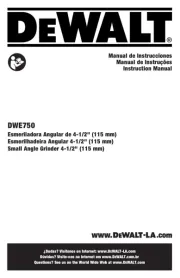
10 Februari 2025

26 Mei 2023

22 Mei 2023

17 Mei 2023

11 Mei 2023

9 Mei 2023

2 Mei 2023

25 April 2023

24 April 2023

23 April 2023
Handleiding Schuurmachine
- Gaggia
- Workzone
- Bort
- Makita
- Gastroback
- Bavaria By Einhell
- Ozito
- Proxxon
- Prowork
- Einhell
- Holzmann
- Rikon
- Powerplus
- Hilti
- Duro Pro
Nieuwste handleidingen voor Schuurmachine
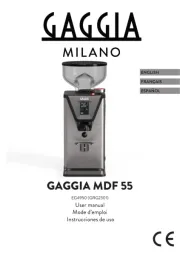
30 Juli 2025
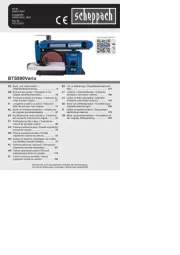
29 Juli 2025
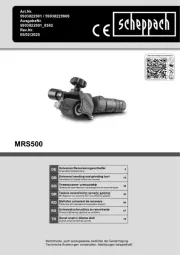
29 Juli 2025
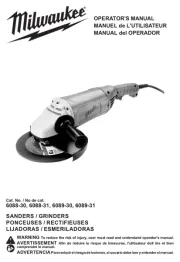
16 Juli 2025
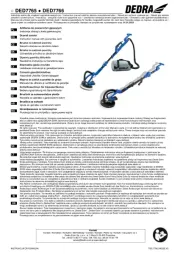
15 Juli 2025
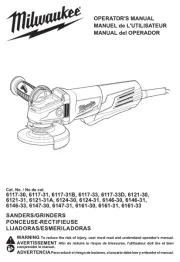
15 Juli 2025
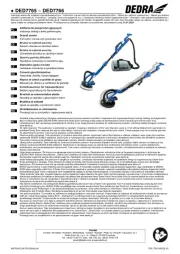
15 Juli 2025
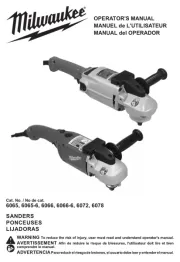
15 Juli 2025
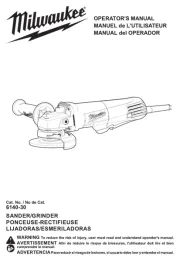
15 Juli 2025
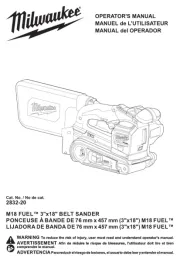
15 Juli 2025